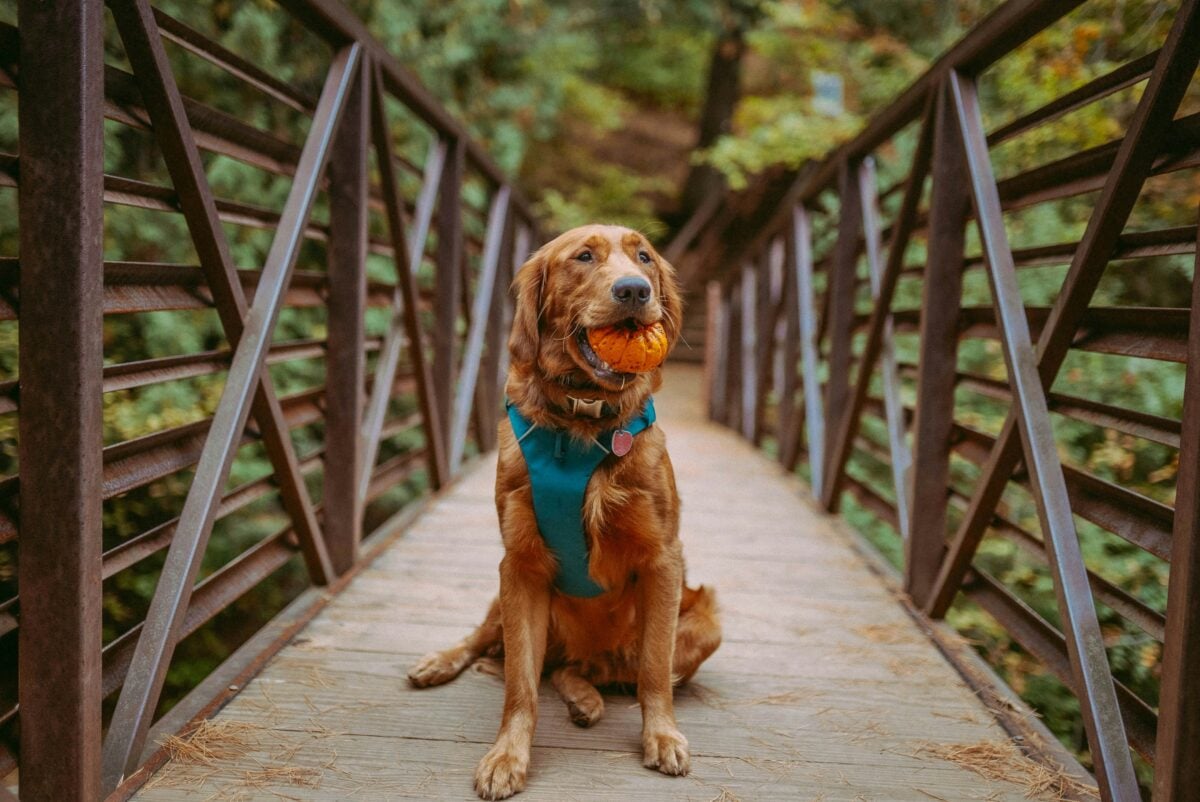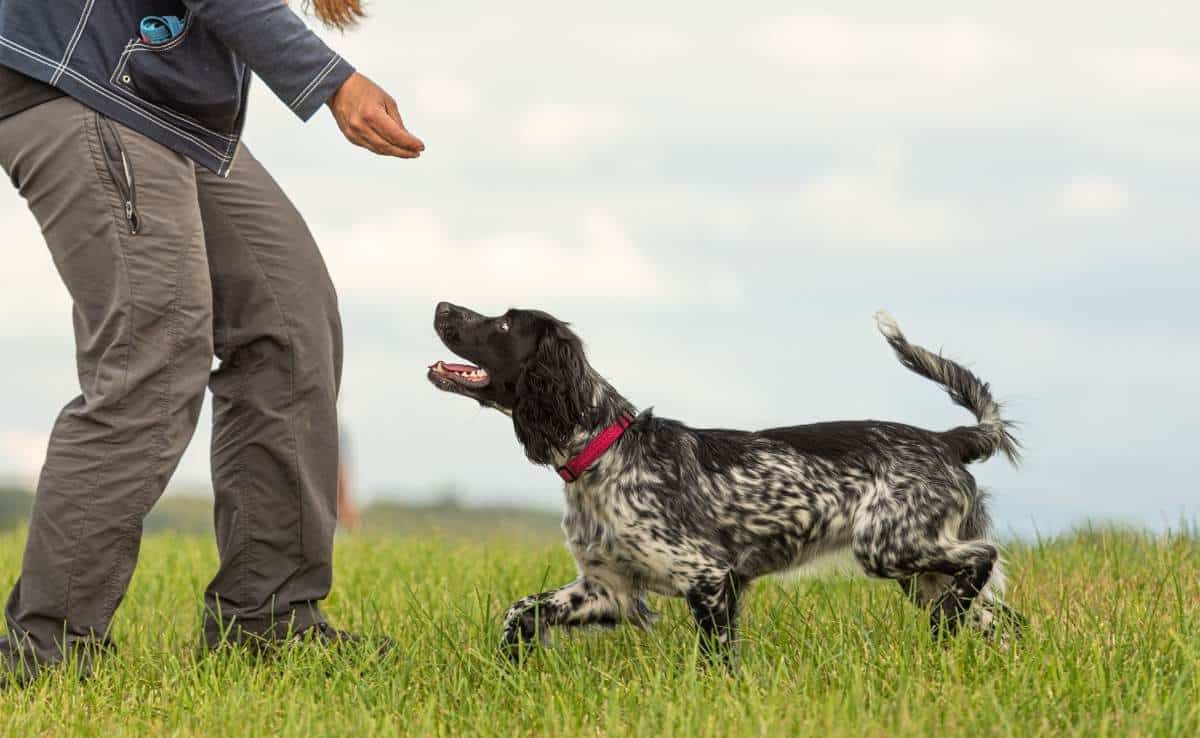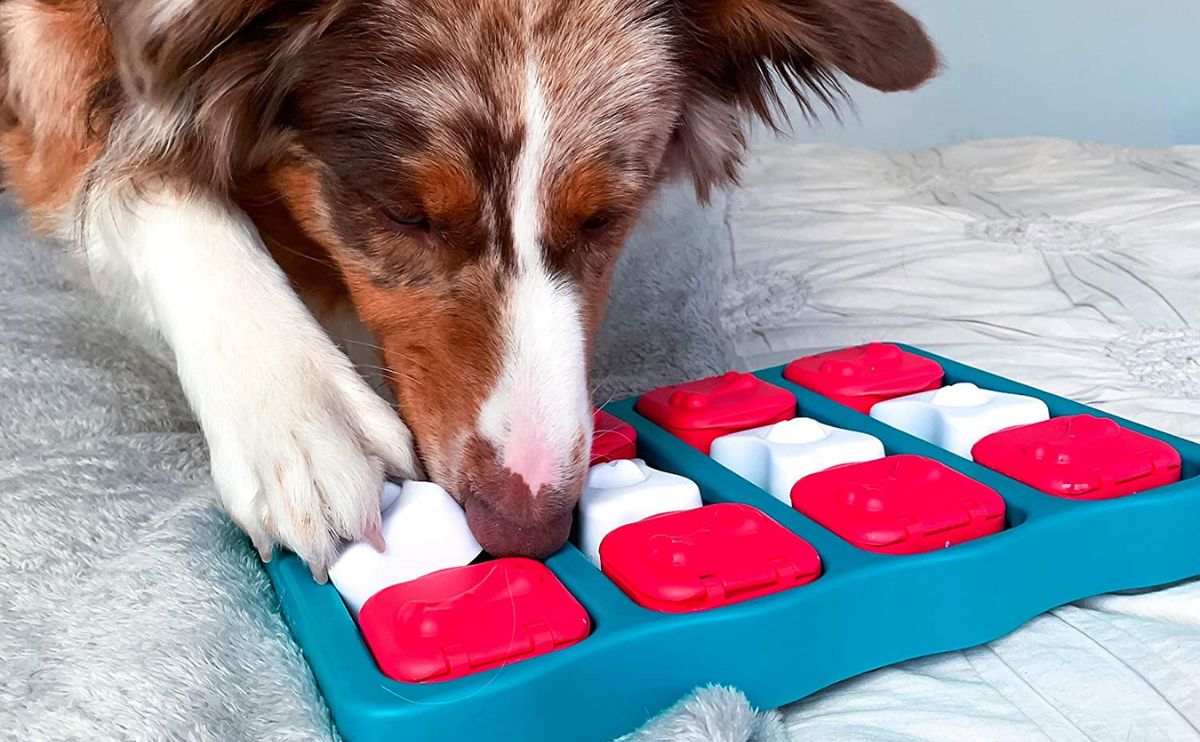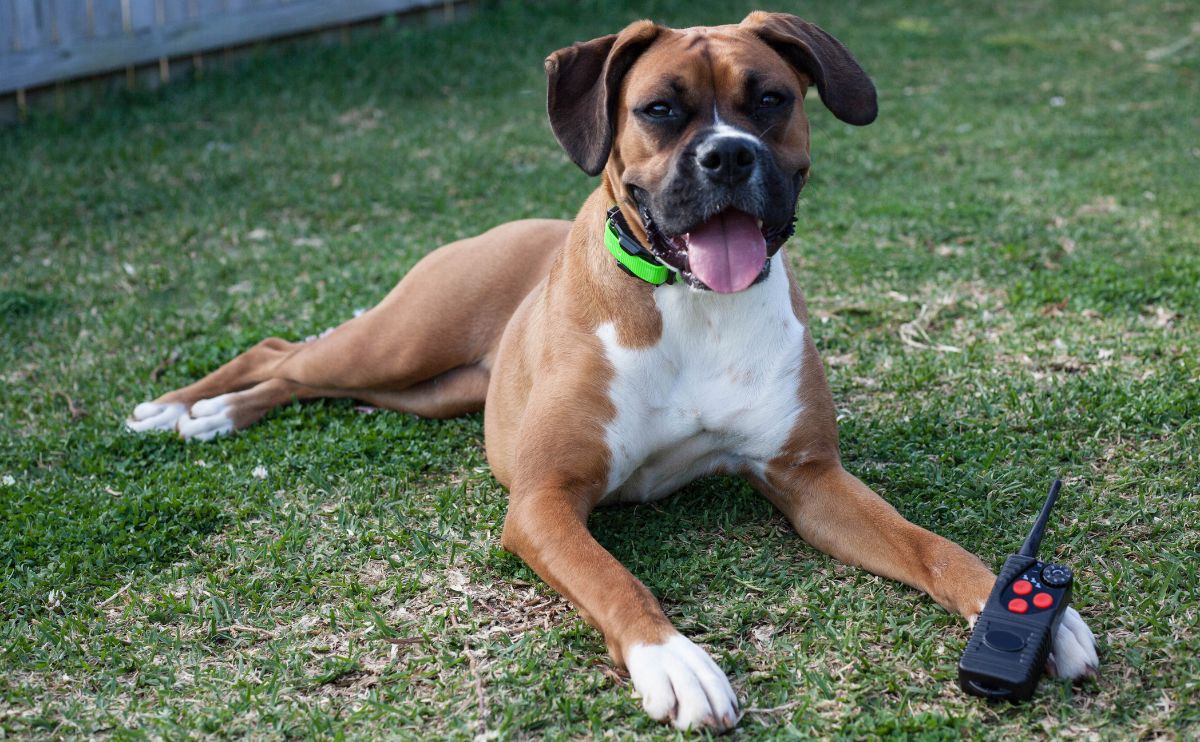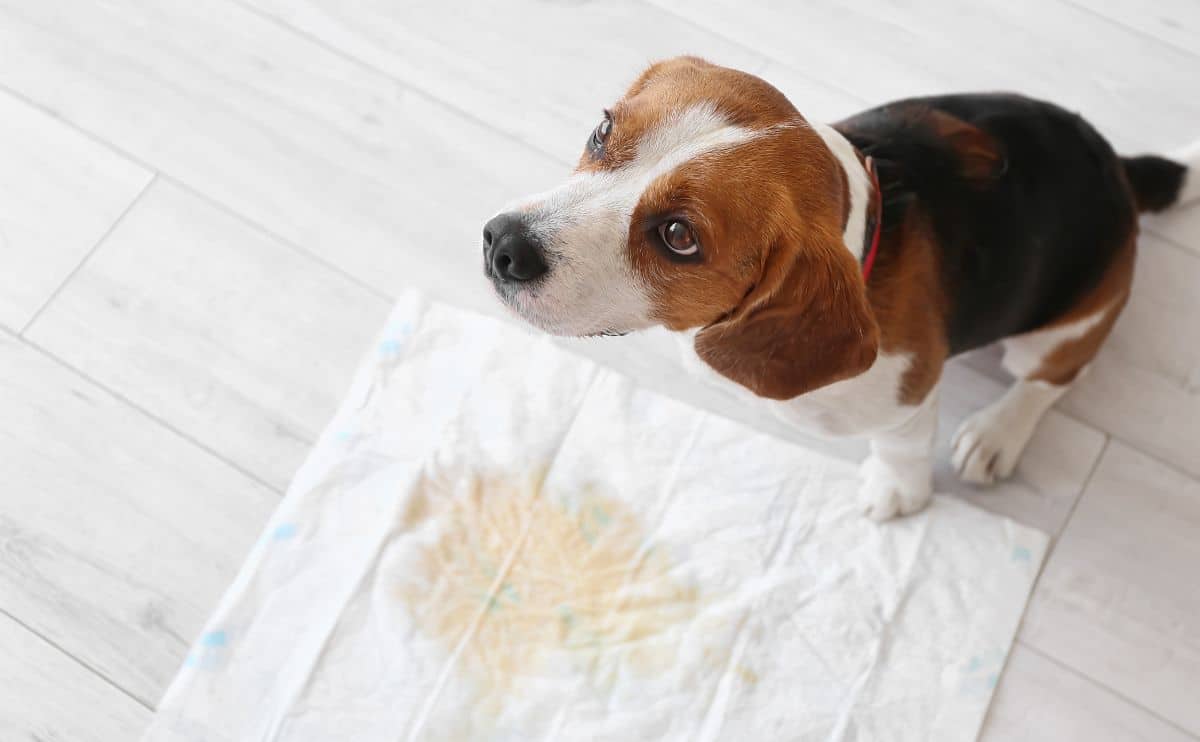How to Train a Dog Without Treats – Yes, Even Your Stubborn Gremlin
When you purchase through links on our site, we may earn a commission. Here’s how it works.
So your dog only listens when you’re holding a chicken nugget hostage? Same. Mine used to stare me down like a furry little mob boss – no treat, no deal.
Table of Contents
But I finally cracked the code. Here’s exactly how I trained my chaos goblin without snacks, bribes, or begging.

Why I Ditched Treats & What Happened Next
Look, I didn’t want to become a walking snack dispenser. But every time I asked my dog to sit, stay, or basically acknowledge my existence, my dog, Sally, gave me her “where’s my paycheck?” face.
I was stuck in a treat trap: reward → obey → forget → repeat. If I didn’t have a snack handy, my dog acted like we’d never met.
That’s when I decided to try treat-free dog training. No bribes. No crinkly bags. Just me, my leash, and a dog who was 90% attitude and 10% fur.
Spoiler: It worked. Not instantly, and not without a little chaos, but it worked. And the best part? Now my dog listens to me, not the bacon bits in my pocket.
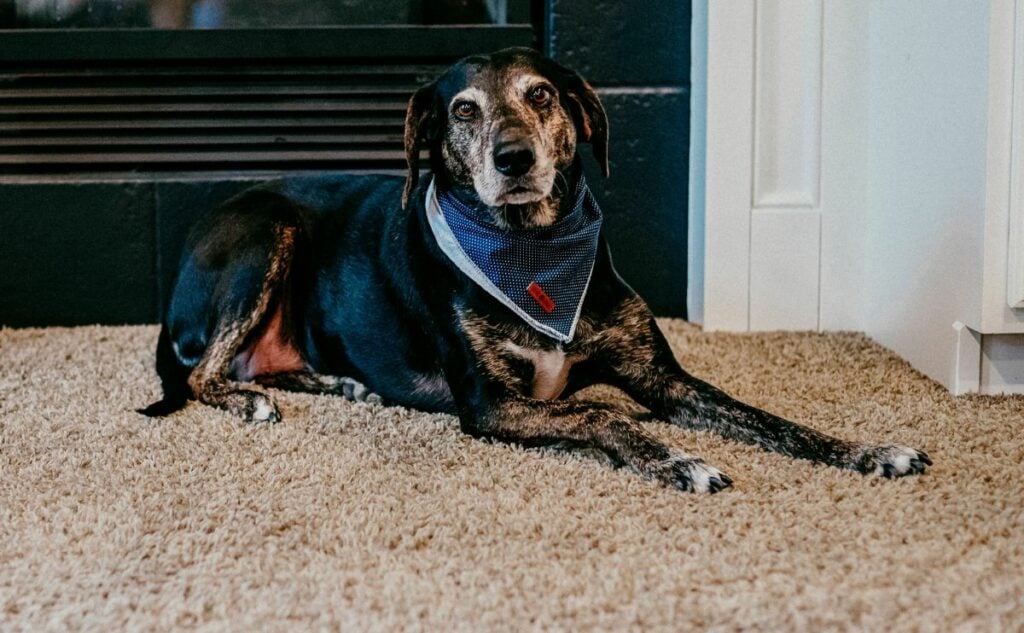
Photo by Kimberly Alt for Canine Journal, © Cover Story Media, Inc. 2024
What Most Dog Owners Get Wrong About Treat Training
Here’s the thing: treats aren’t evil. But depending on them like a doggy debit card? That’s where most people go wrong.
We accidentally teach our dogs:
- “You only have to listen if I’m holding snacks.”
- “If you ignore me long enough, the treats get better.”
- “Sit = cheese. Everything else = optional.”
The result? A dog that’s not trained, instead, they’re negotiating.
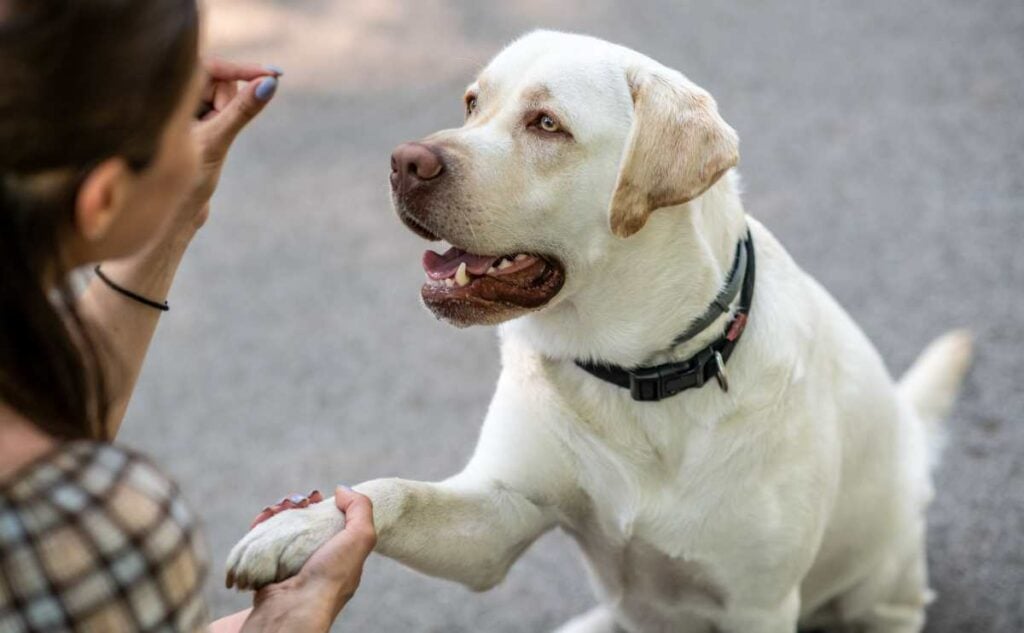
The real issue isn’t using treats. It’s only using treats. That’s why so many people think their dog is “stubborn” when really, they’ve just built a furry little vending machine.
If you want lasting obedience, you need something more powerful than food: clear cues, consistency, and real-life rewards (like praise, play, or going outside).
The Leash Gesture Method: My #1 No-Treat Training Hack
Here’s how I broke the treat cycle: I taught my dog to respond to leash movements, like hand signals, but with a built-in backup plan.
I call it leash whispering. She thinks I’m reading her mind. (I’m not. I’m just holding the other end.) Here’s how it works:
- Say the command (e.g., “Sit”)
- Apply a gentle leash gesture – a slight upward lift for sit, for example
- Mark the behavior with “Yes!” or a click when she does it
- Reward with praise or action – a walk starts, the door opens, or she gets to sniff something exciting
No food. No bribes. Just clear communication backed by leash cues and real-world rewards.
Over time, the leash gesture fades, and she responds to the voice alone. (Except squirrels. We’re still in negotiations.)
Want to Go Deeper on Leash Training? Leash cues are one of the best tools for no-treat training. If you’d like a full step-by-step guide, check out our complete article on leash training your dog.
Keep The Leash On (Even in the House)
This sounds weird, I know. But keeping your dog on a leash inside your house might be the smartest no-treat training move you’ll ever make.
Here’s why: a good dog leash gives you instant control and instant feedback, without yelling, chasing, or dangling a snack like a magician.
With the leash on:
- You can calmly guide them into a sit or down without bribes
- You can block bad behavior before it happens (like couch-diving or zoomie-related crimes)
- You stay more involved, and they learn that following your lead matters, no matter the setting
I call it “tether training”. Your dog learns to check in with you, not just run the house like a tiny, hairy landlord.
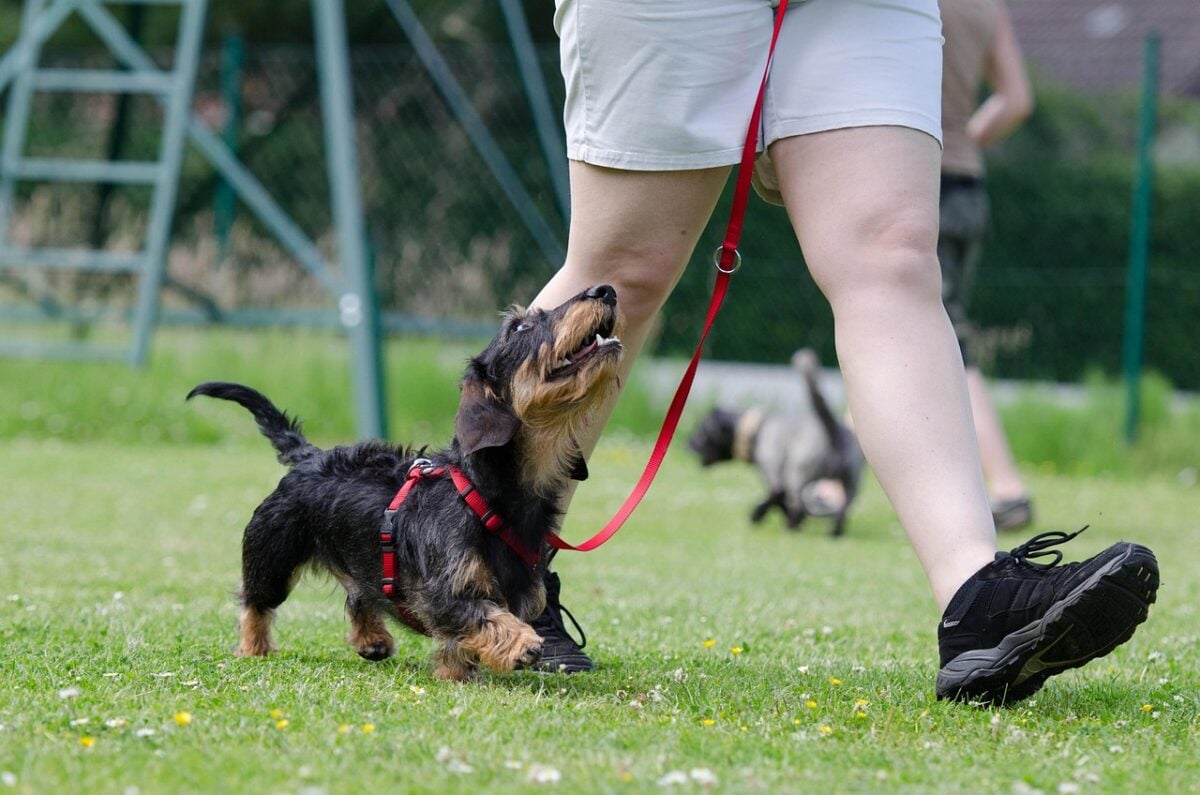
It’s temporary. It’s gentle. And it’s weirdly effective.
What To Do If Your Dog Ignores You Without Treats
So you ditched the treats, gave a command… and your dog looked at you like you just asked them to file taxes.
Yep, that’s normal. Dogs who are used to food bribes need to unlearn that “listening only counts when chicken is involved.” Here’s how to flip the script:
- Switch the reward. Use praise, toys, or a chance to sniff something smelly. (For some dogs, sniffing a bush = jackpot.)
- Use leash cues. A gentle tug or gesture guides them back on track without yelling or bribery.
- Lower the distraction. If your dog ignores you at the park, practice in your living room first. Build up slowly.
- Be consistent. One ignored command won’t break training, but five ignored commands with no follow-through will.
Your dog’s not being “stubborn” – they’re just replaying the rules they learned: “No treat = no reason.”
Your job now is to teach them the new rule: “Listening itself is the reward.”
And trust me, once it clicks, it’s magic. You’ll call your dog, they’ll actually come, and you’ll wonder why you ever carried a pocket full of crumbs in the first place.
Need Professional Help? If these tips aren’t working well with your dog or you need more specific help, check out our online dog training article. Read our review of this affordable way to learn from a pro at home.
Play Instead of Pay
Some dogs would sell their soul for a slice of cheese. Others? They’ll blow right past your chicken strip if there’s a squeaky ball in sight. All dogs are different.
That’s the secret: play is just as powerful a reward as food. For a lot of dogs, it’s better. Here are some easy ways to use play as a reward:
- Fetch as payment: Ask for “sit,” then toss the ball.
- Tug-of-war bonus: Cue “stay,” reward with a 10-second tug.
- Chase me: Call “come,” then sprint away like you just robbed a deli.
- Toy carry mission: Give them a toy to hold after a correct response equals a double reward – “I did it, and I get to strut.”
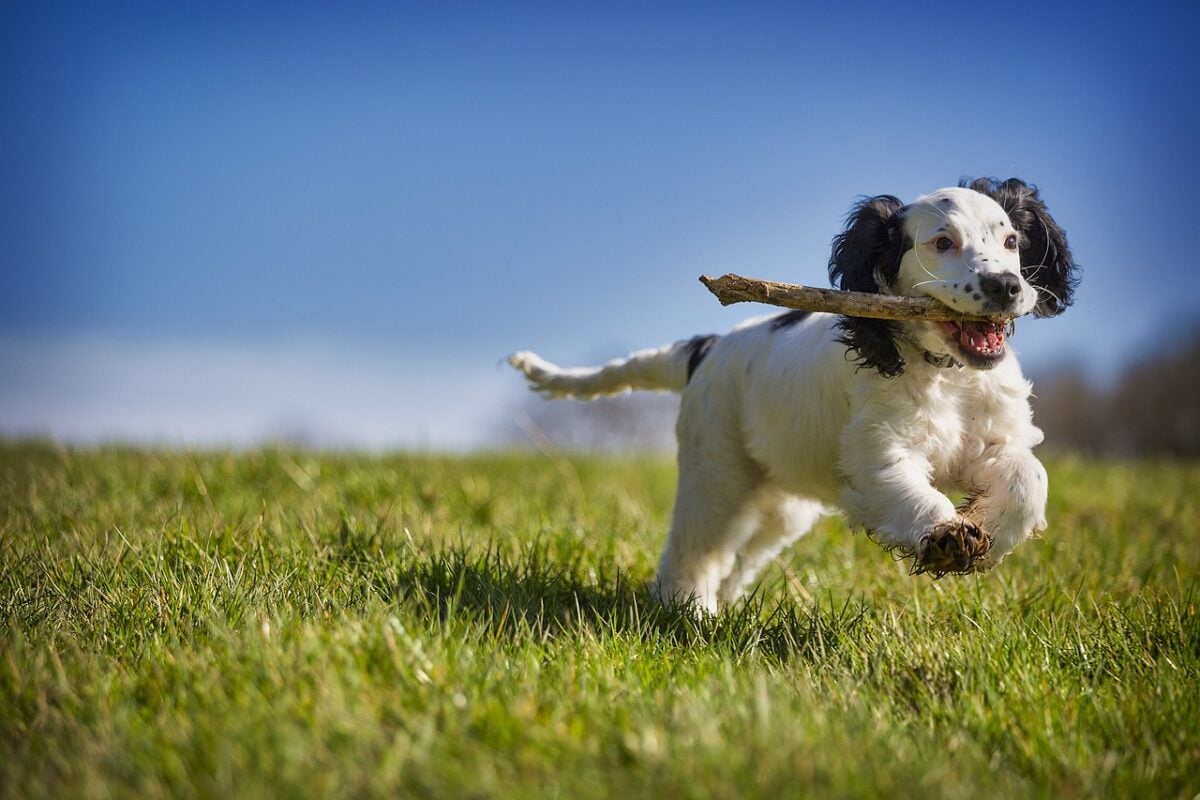
Why it works: Play rewards engage their brain and body, not just their stomach. Plus, you’re the source of the fun. That means your dog learns to look to you, not the treat pouch.
And the best part? No more crumbled hot dog bits in your jacket pocket.
Treats vs. No Treats: When Each One Actually Works
Here’s the truth: treats aren’t evil. They’re just overused. Think of them like coffee – life-changing in the right moment, a disaster if you need six cups just to function.
When Treats Make Sense
- Puppy basics: Fast results when your dog’s brain is still mushy.
- Trick training: Spin, roll over, high-five = snack-worthy.
- Scary stuff: Vet visits, nail trims, thunder nights. Bribes are allowed.
When to Go Treat-Free
- Obedience commands: Sit, stay, come → these should work anytime, anywhere.
- Everyday manners: No jumping, no stealing socks, no counter surfing.
- Real-life rewards: Praise, play, walks, sniffing, attention.
The secret isn’t choosing one or the other; it’s knowing when to swap. Treats get you started. No-treat training makes it stick.
That way, your dog listens even when your pocket’s empty.
How to Stop Using Treats Without Confusing Your Dog
Going cold turkey (pun intended) on training snacks can backfire. Your dog’s like, “Excuse me, where’s payroll?”
Instead of quitting overnight, think of it as a fade-out plan: treats shrink, but praise + play grow. Here’s the fade-out formula I used:
- Start variable. Reward every other sit, then every third, until it’s random.
- Switch the bonus. Slip in a toy, leash release, or a big “GOOD DOG!” instead of food.
- Phase the pocket. Carry fewer treats, keep gestures and cues the same.
- Save the snacks for jackpots. Nail a tough behavior in a tough place? Boom, surprise chicken nugget party.
Your dog learns:
- Treats aren’t gone… they’re special.
- Praise and play happen every time.
That way, your pup doesn’t get confused. They get motivated.
3 Important Commands: How I Taught Sit, Stay & Come
This is where the magic happens: basic obedience, no snacks required.
Here’s exactly how I taught my stubborn gremlin the Big Three – sit, stay, and come – without turning into a human Pez dispenser.
1. Sit
- Say “Sit.”
- Gentle leash lift upward → dog’s bum naturally lowers.
- The second it hits the ground, mark it: “Yes!”
- Reward with praise, a pat, or starting the walk.
After a few reps, the leash cue fades and the word sticks.
2. Stay
- Say “Stay” with a hand signal (flat palm).
- Step back one pace. If they move, calmly reset.
- If they hold position, praise + release with “Okay!”
- Gradually increase distance and time.
Quick trick: make “stay” a job, not a punishment. Dogs like structure, not statues.
3. Come
- Say “Come” in an excited tone (sound fun, not furious).
- Give a light leash tug backward to guide.
- When they run to you, praise BIG — cheer, pet, even play chase.
- Release them again so they don’t learn “come” = end of fun.
No treats. Just you = the party.
Dog Training 101: My Video Walkthrough
Reading about no-treat training is one thing. Seeing it in action? That’s the game-changer. Watch this short video to see me training my dog, Sally.
Watch how fast the shift happens: once the treats disappear, your dog still listens, because they’re following you, not your pocket.
‘Leave It’ Without Using Food: 4 Steps
“Leave it” is one of the most useful commands you’ll ever teach. Dropped food, socks, your dinner plate – it’s the difference between chaos and control.
Most people rely on treats to teach it: lure with food, then swap for something better. But here’s how I did it without snacks.
Step 1: Start With Something Low-Value
Place an object on the floor (a shoe, not a steak). Say “Leave it.” If your dog moves toward it, use a gentle leash correction or block with your foot.
Step 2: Reward With Praise
The second they hesitate or turn back to you, mark it with “Yes!” and praise enthusiastically. Make the reward your attention, not food.
Step 3: Level Up Slowly
Once they understand “Leave it” with boring objects, move to higher temptations: toys, dropped crumbs, even the mailbox squirrel.
Always reward with praise, play, or a quick redirect into a different behavior.
Step 4: Practice in Real Life
Drop a sock while walking, open the fridge, or set something tempting on the coffee table. Say “Leave it” and follow through the same way.
Over time, “Leave it” becomes second nature – not because there’s food in your hand, but because listening to you always matters.
Training Puppies Without Treats: 4 Steps
Can you train puppies without treats? Short answer: Yes. Long answer: Be patient.
Puppies are furry chaos machines with the attention span of a goldfish on espresso. Treats often feel like the only way to break through. However, you can absolutely train a puppy without food if you keep the process simple.
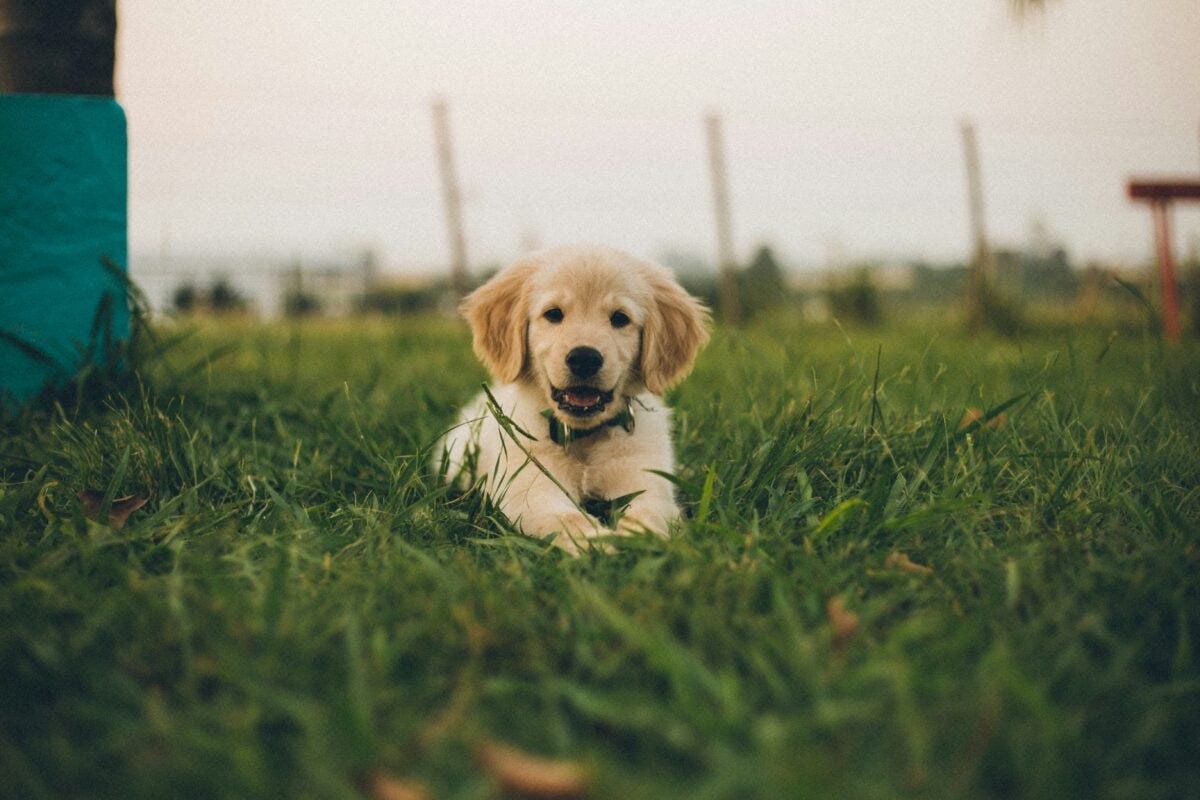
Step 1: Make Yourself the Reward
Puppies crave interaction. Use your voice, touch, and play as the “treat.” A big “GOOD PUP!” and a belly rub go a long way.
Step 2: Keep Sessions Micro-Sized
Two minutes here, two minutes there. Puppies learn best in short, fun bursts, not 20-minute obedience marathons.
Step 3: Use Life Rewards
Want outside time? Sit first. Want freedom from the crate? Quiet gets the door open. Every day experiences teach just as much as snacks.
Step 4: Be Consistent
Don’t let the cuteness sway you. If you ask for a sit before the leash goes on, stick to it every time. Puppies thrive on patterns.
Potty on Command: 4 Steps
Yes, you can actually train your dog to “go” on cue. And no, you don’t need a pocket of treats to make it happen.
Step 1: Pick Your Command
Choose a simple phrase like “Go potty” or “Do your business.” Keep it consistent every time.
Step 2: Catch Them in the Act
When your dog naturally starts to go outside, calmly say your chosen phrase. Don’t distract them, just let the words pair with the action.
Step 3: Praise the Finish
As soon as they’re done, mark it with “Yes!” and give plenty of praise, affection, or even a chance to play. The bathroom break itself becomes the reward.
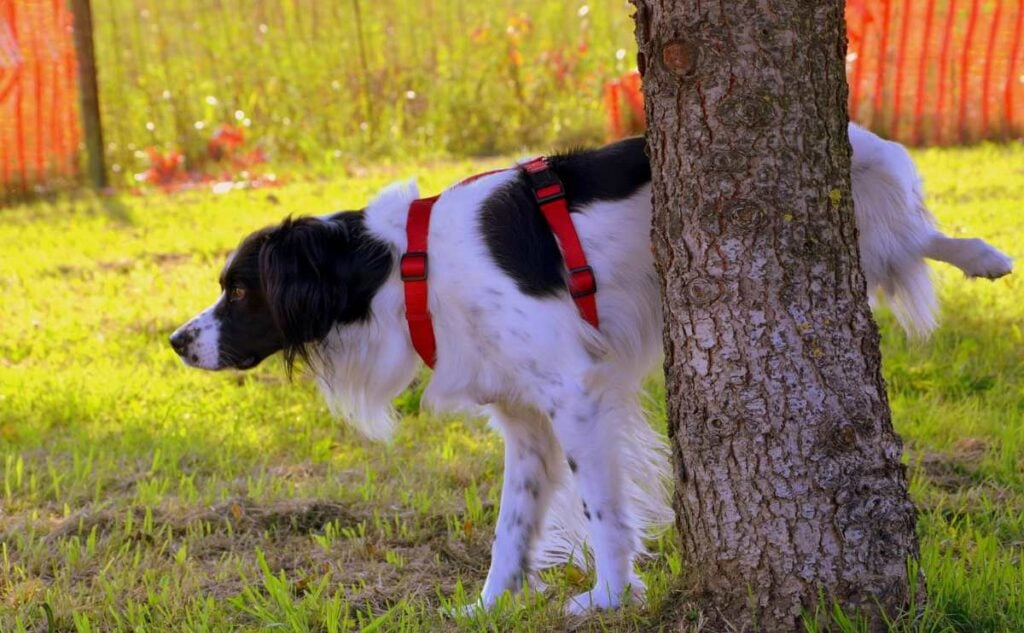
Step 4: Build the Association
Repeat this consistently. Over time, your dog will connect the command with the action. Eventually, you’ll be able to cue them before a car ride, bedtime, or a long day out.
Learn more about dog toilet options for indoor potty breaks.
3 Bonus Behaviors: Training Other Cues Without Treats
Once your dog understands the basics, sit, stay, come, and leave it, you can use the same no-treat methods to teach just about anything.
The key is simple: clear cue + leash or hand signal + praise/play as the reward.
1. “Down” Without Snacks
- Say “Down.”
- Use a leash cue to guide them into position (gentle downward motion).
- Mark it with “Yes!” when they lie down.
- Reward with praise or play.
2. “Wait” at Doors
- Ask for “Sit.”
- Place your hand on the door, but don’t open it yet.
- Say “Wait.”
- Open the door only when they hold position.
The real reward here? Going outside.
3. “Heel” on Walks
- Start with the dog at your side.
- Say “Heel” and walk forward.
- Use leash guidance if they drift.
- Mark and praise when they stay in position.
The reward becomes the walk itself.
Give Your Dog a Job
Some dogs chase balls. Others herd shadows. Mine? She proudly hauls a dirty sock around the house like it’s a VIP briefcase.
And weirdly, that sock job fixed half of her behavioral issues.
Dogs are wired to do stuff, not just sit around waiting for snacks to fall from the sky. When they’re bored, they misbehave. When they have a purpose, they focus.
That’s why “giving your dog a job” is one of the best no-treat training tools out there.
Easy Jobs That Aren’t Actually Jobs
- Carry something on walks (a toy, a small pack, yes, even a sock)
- Help “clean up” toys or bring you shoes (bonus: fetch with purpose)
- Wait calmly at thresholds like a security guard
- Walk in a “heel” position with purpose (not just dragging you to the squirrels)

These tiny tasks teach your dog:
- “Listening gets me structure, not just snacks.”
- “Following you is part of the job.”
You don’t need a working dog to put your dog to work. Just give them a role and praise the heck out of them when they do it.
Do I Really Need to Be the Alpha? Here’s the Real Deal
Short answer? No, you don’t have to cosplay as a wolf pack leader. But you do need to be clear, consistent, and calm, because dogs love structure, not power trips.
The old-school “alpha” model was based on wolves in captivity… and a lot of misinterpretation. Spoiler: Even actual dog researchers have backed away from that theory.
That said, your dog still needs leadership, the kind that says:
- “Here’s what I expect.”
- “Here’s what happens if you do it (yay praise!)”
- “Here’s what happens if you don’t (nothing exciting).”
You don’t need to dominate your dog. You just need to make listening to you make sense.
That’s what no-treat training is really about: clear signals + real-life consequences, not yelling or alpha rolling like it’s 1993.
Should Dogs Be Allowed On The Couch?
Confession: my dog thinks the couch is her throne. And honestly? Sometimes I let her win.
But here’s the deal: the furniture question isn’t about crumbs or fur, it’s about consistency. If your dog gets mixed signals (allowed today, banished tomorrow), they’ll test every rule, every time.
Treats or no treats, structure matters. You don’t have to be a drill sergeant; you just have to be predictable.
Want your dog off the couch? Use your leash cue, guide them down, and reward with praise or a comfy dog bed. Want them on? Give them a clear invite, not a free-for-all.
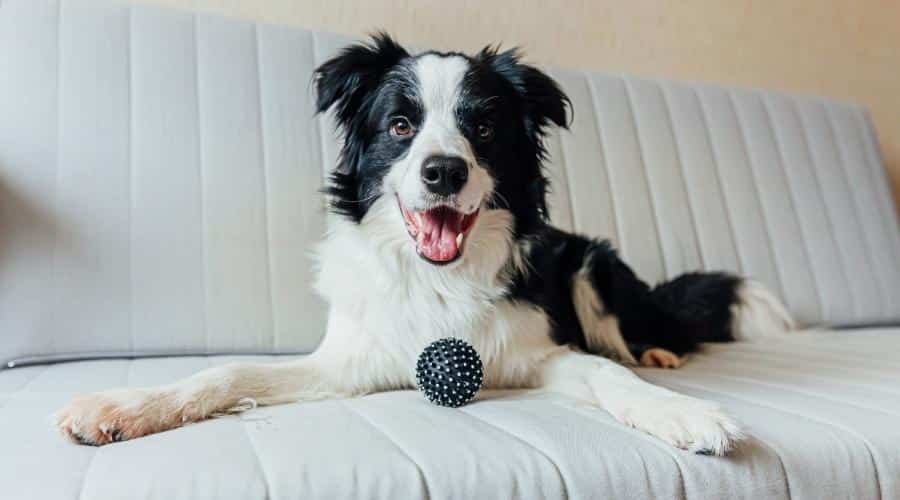
The couch isn’t the real issue. It’s teaching your dog that listening works the same everywhere – on walks, at doors, and yes, even on the throne.
My Personal Experience With Treat Training
I tried to treat train my dog, Sally, when I first adopted her. I had always been told that positive reinforcement is the best way to train, which led me to believe that treat training was my only option, but I was misinformed.
Some things worked with treat training, and other things didn’t. For example, putting treats in her house (kennel) to convince her to go in so I could leave the house momentarily worked.
However, using treats to keep her from barking at other dogs, fixating on squirrels, or lunging at vehicles did not work, no matter how proactive I was.
Sally is very food-driven, but if there are outside forces (dogs, squirrels, bunnies, etc.), she’s going to be more interested in them than food. So we had to find a different way to obtain her attention without relying solely on treats.
This caused us to seek a professional trainer’s help, and thus we were introduced to training without treats, which was extremely successful for us.
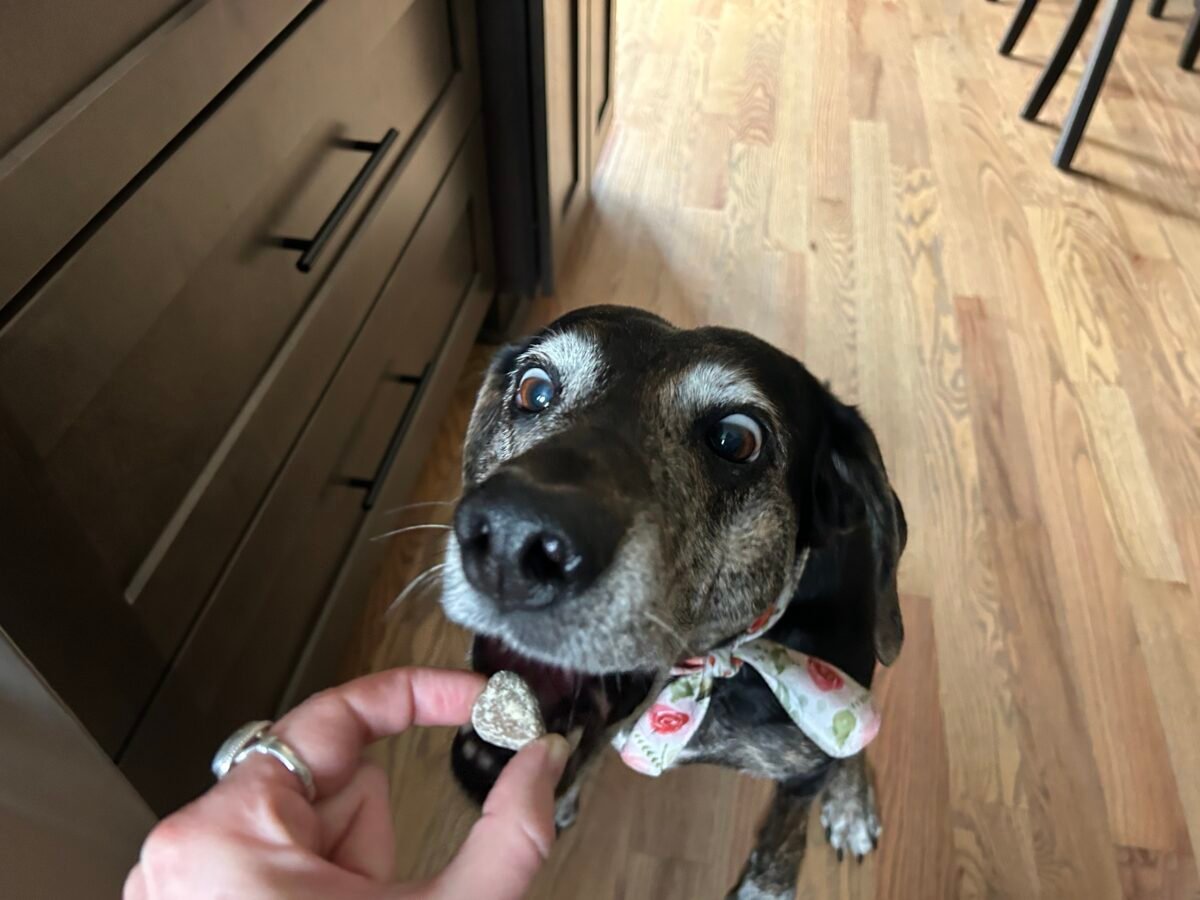
While I do believe in positive reinforcement training, I also believe that reinforcement can come in the form of positive words and gestures towards my dog, as much as it does in the form of treats.
Trust me, Sally still gets plenty of treats, but when we’re focusing on training, I give her confirmation by giving her affection and saying, “good girl.”
Why Shouldn’t You Lean On Treats For Training?
Your dog should love you for more than just dispensing food to them. Leaning on treats to grow your relationship with your dog can prevent the relationship from reaching a deeper, more meaningful level.
I found that looking for alternative ways to connect with Sally outside of food, such as play, life rewards, and affection, deepened our relationship.
I noticed that when I treat-trained Sally, she seemed to be continually looking to please me (which was good), but, in truth, it was simply to obtain food. For us, shifting from treats to verbal praise allowed our relationship to leap to a new level. She was more affectionate and listened to my commands carefully.
How Long Did It Take?
My dog trainer told me it takes 2 weeks to create a new habit for a dog. If you can do this for 2 weeks, I’m confident you’ll see positive results. And, if you find your dog only responds to treats, that is perfectly okay.
Training Dogs On Other Behaviors
If you need help training your dog with other things like whining, digging holes, or other dog training subjects, be sure to check out these articles. And if you need professional help, now might be a good time to learn about online dog training.
Share Your Story! Have you tried training your dog without treats? I’d love to hear how it went, whether your pup nailed it, completely ignored you, or staged a full-on protest. Share your story in the comments. Your wins or funniest fails could inspire other dog parents who are struggling with their own stubborn gremlin.
